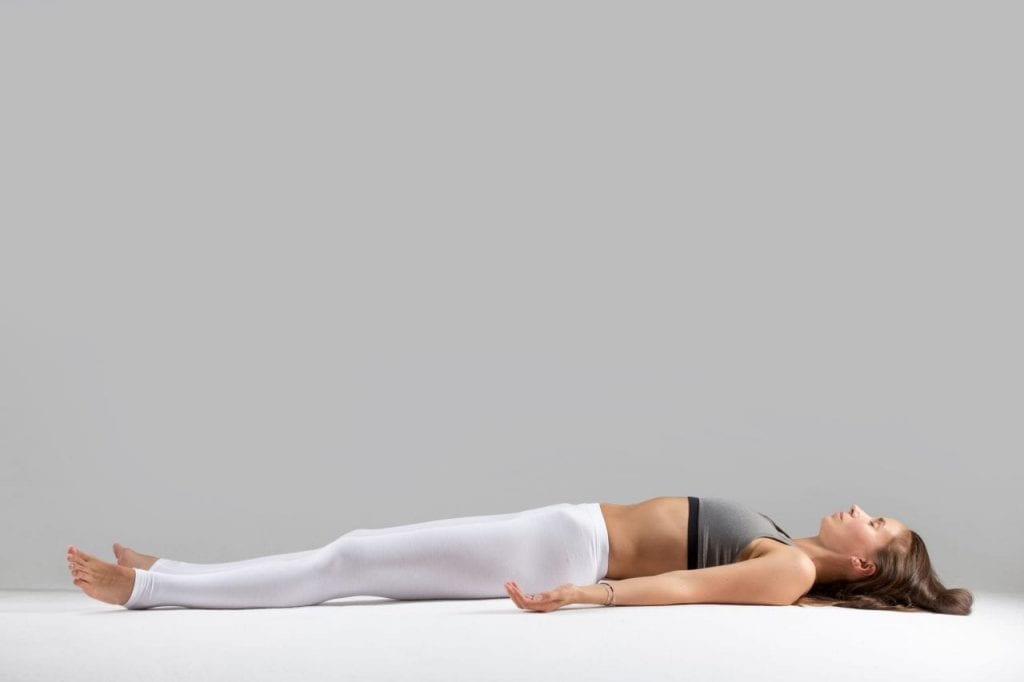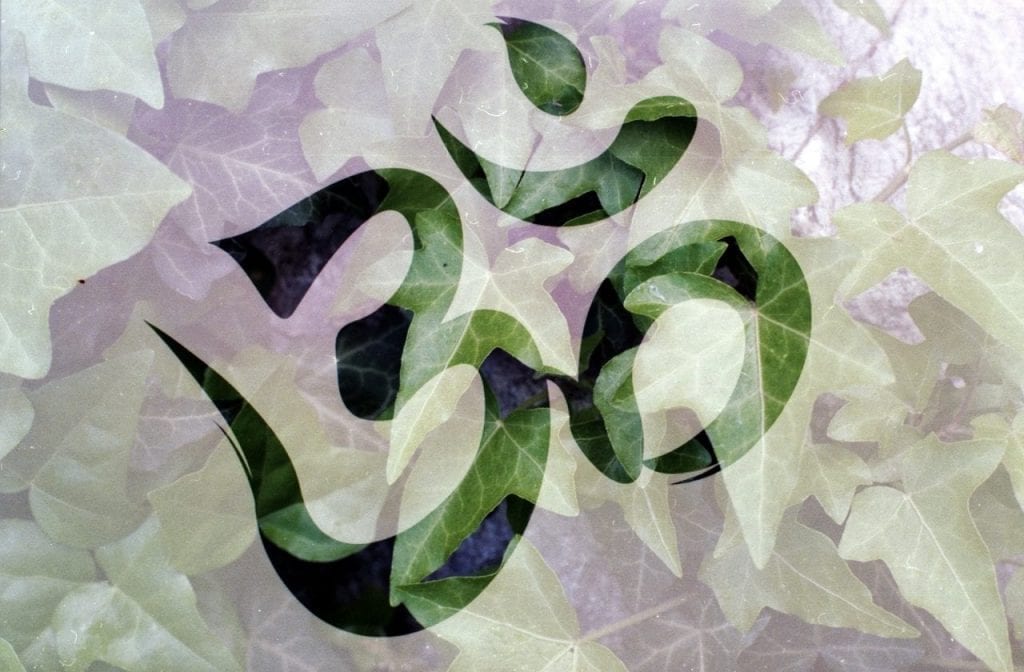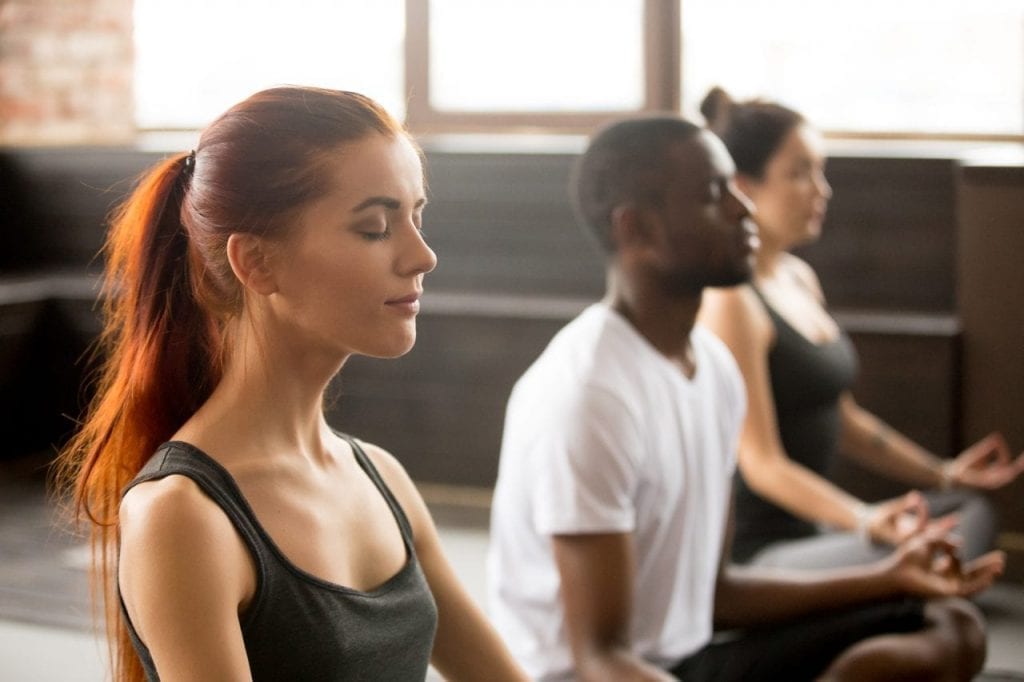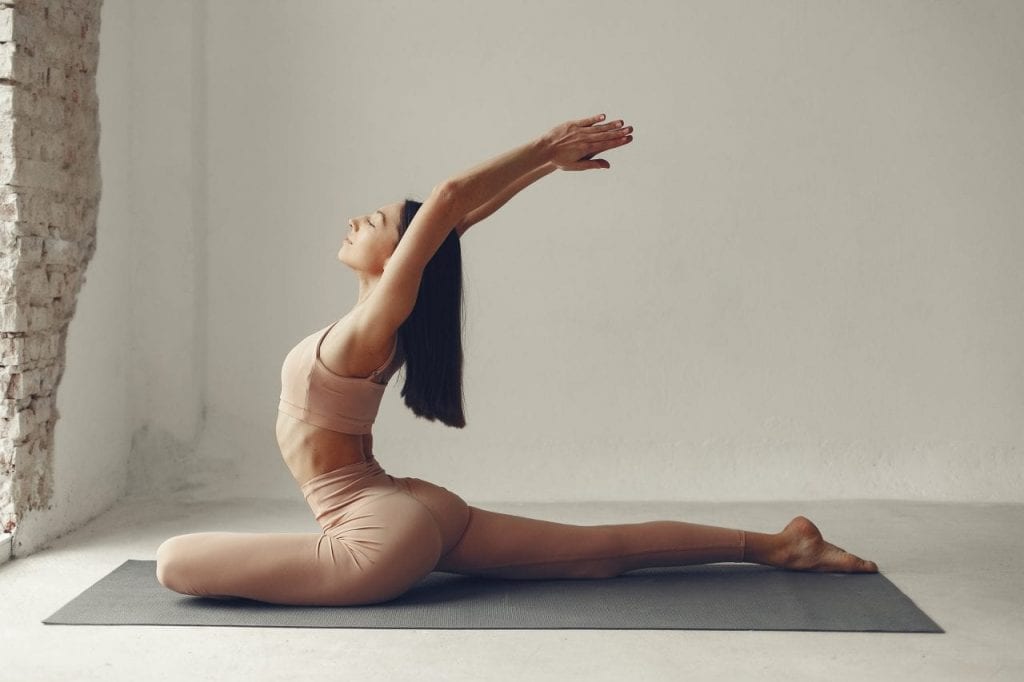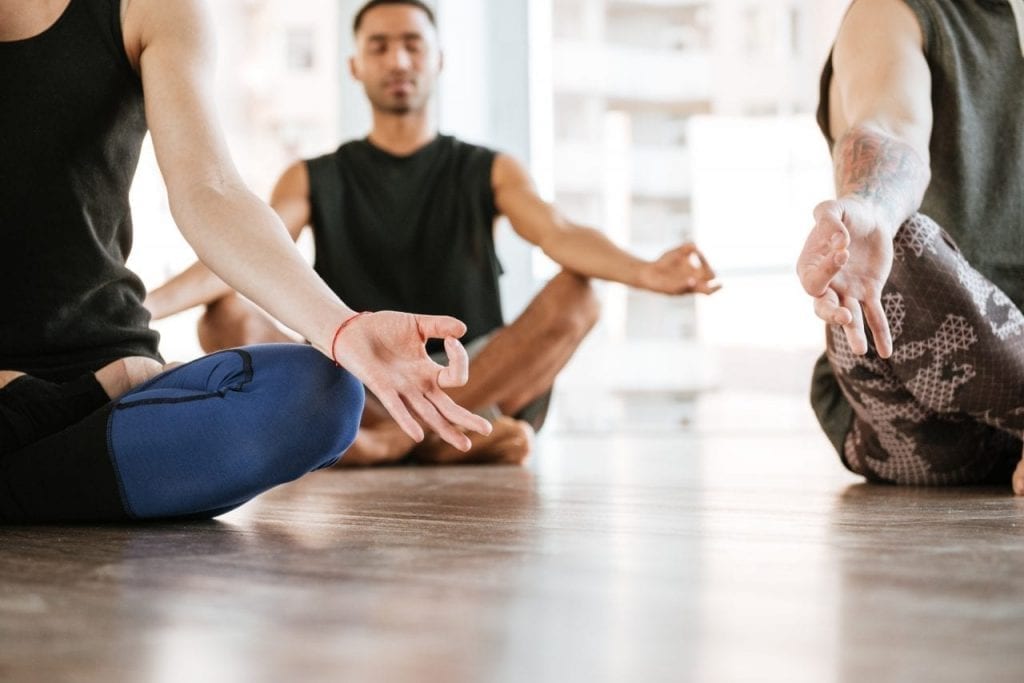An Introduction to Vinyasa Yoga
The Sanskrit word ‘Vinyasa’ originates from two words, the prefix ‘vi’ means variation and the suffix ‘Nyasa’ means within prescribed parameters.
This style of yoga is especially characterized by stringing postures together that promotes movement from one to another, seamlessly using breath. The purpose of it is to use the breath to align the body with the mind (1).
In its original meaning from the early Tantras, Vinyasa is defined as the ‘sequence of consciousness’ or the way life unfolds from the creative pulse of life.
Philosophically, Vinyasa understands the temporary nature of the things around us. The practice of this yoga form is said to begin with T. Krishnamacharya, who had a great influence on the kind of yoga that is practiced today (2).
Place of Origin of Vinyasa Yoga
The birth of Vinyasa can be dated back to 1500-500 BC, the Vedic age. This is when Sun salutations ( Namaskaras ) were first referred to in the Rig Veda, which is the oldest collection of Hindu scripts (3).
An ancient text named ‘The Yoga Korunta’ was written by Vamana Rishi in the early 1900s and was given to Sri. T. Krishnamacharya (4). This particular text outlines a flowing sequence of yoga poses that is known as Vinyasa Krama (5).
This, in particular, suggests a way to connect mudra (hand gesture), pranayama (breathing exercise), bandhas ( physical locks), meditation, asana (posture), Drishti (focus gaze), and Japa (repetition of mantras) (6).
Vinyasa yoga was from the Ashtanga lineage. The Ashtanga school was developed by Shri. T. Krishnamacharya. This knowledge was then shared with Patthabi Jois, a student of his. Jois taught in Mysore, India during the first half of the 20th century. He is the person who then popularized the Vinyasa Ashtanga style and later brought this
yoga style to the western world. Rishi Vamana was also given the credit for creating Vinyasa yoga.
The idea behind it was to simultaneously embody the different facets of yoga: mudra, meditation, asana, and pranayama.
The Characteristics of Vinyasa Flow Yoga
Today’s Vinyasa yoga is derived from Ashtanga Vinyasa and is a more flexible and creative form. Western yoga students created it over the years because they didn’t want to practice the repetitive sequence. So Vinyasa Yoga today is a sequence of yoga poses (7) where you move from one pose to another, mostly on the teacher’s discretion.
- Vinyasa yoga connects one posture to the next using breath
- Vinyasa is synonymous with movement
- Movements are breadth initiated
- It is a meditation in motion
- It is a hatha yoga breathing system
- Transitions
- It is all about the organs
- It meets you where you are
- Vinyasa practice generates heat
- There is a drishti (gaze) related to each pose
- There are different ways to approach vinyasa from rapid to slow
- vinyasa ends where it begins
- Often considered a moving meditation
How to Do Vinyasa Yoga
Vinyasa can be used to describe a specific sequence of poses that are done as part of the Sun Salutation sequence. A Plank, Chaturanga to Upward-Facing on to Downward-Facing Dog, commonly used throughout the Vinyasa class (7).
A proper Vinyasa should be done at a slow pace. You should be able to feel each pose. A balance of energy between the front of the body and back should be felt in the plank pose.
On an exhale, the weight shifts forward to lower chaturanga (The Four-Limbed Staff Pose). A common mistake in chaturanga is to dip the shoulders lower than the elbows. This shouldn’t be a habit as then you are at risk of rotator cuff injury.
On an inhale, the heads of the shoulders roll up and back, the arms straighten and the feet are flipped to plantar flexion for the forward-facing dog.
The exhale then brings the student back to the downward-facing dog. That is the resting pose of vinyasa yoga. The weight is back to its heels. When all these poses are performed correctly, the energy can flow fluidly through the body.
Why Vinyasa Yoga is So Popular
Vinyasa yoga is one of the most popular yoga as compared to other forms (8). The reasons behind that are:
- It is a form that doesn’t take very long to learn to teach initially. However, it should be kept in mind that it does take time and effort to learn to teach well.
- Vinyasa yoga is aerobic and athletic in nature. People want to work out, sweat, and lose calories. Vinyasa provides you that.
- Vinyasa yoga is fun
Reasons To Practice Vinyasa
Vinyasa refers to breath-synchronized-movement. It benefits us in many ways (9). They are:
- Makes you stay focussed by submerging into the flow
- It pushes you to your limit
- It is a great cardio
- It is perfect for beginners
- It’s all about variety and fun to do
Relationship Between Ashtanga And Vinyasa
- Ashtanga yoga consists of a series of postures that vary from primary to secondary and finally advanced. But in Vinyasa class the sequence varies and the practitioner or the teacher may change the sequence each time.
- Ashtanga series starts with a primary series that centers on forwarding bend, then the second series that focuses on backbends and the advanced series that emphasizes on arm balancing and arm support pose. In Vinyasa, postures often have a peak pose, that is usually chosen by the teacher in accordance with the student’s level.
- Ashtanga yoga practitioners do not use props, posture modifications, or music. In Vinyasa classes, some teachers do make props available to adapt and adjust to some asanas if the need arrives.
- In Ashtanga practice, the main development is up to the student with the Mysore style class that is mentioned above but in Vinyasa class, the teacher always leads the students through asanas.
Vinyasa Reflects Our Own Story
In Vinyasa, we move from a child’s pose to death pose (savasana) and can experience the entire lifetime. It serves as a metaphor for our lives as we flow from one situation to another (10).
In every posture of Vinyasa yoga, we enter the pose, stay for some time, and leave and it is sacred because it reflects the same way that we do in our lives. When we skillfully navigate these postures on the mat, it helps us in more tangible ways.
Three Parts Building The Foundation Of Vinyasa Yoga
-
Continuous Movement And Flow:
Between each asana, there is a series of movements done in Vinyasa. But opposed to Ashtanga or Hatha yoga, Vinyasa is more about maintaining the flow all along during the practice. It also allows flexibility and creativeness when it comes to alignment. No strict rules or guidelines are followed on how it should look like or do. Vinyasa accepts everyone as per their current condition. -
Ujayi Breath:
In Vinyasa, the goal is to create a continuous breath and let it guide you. To synchronize your movement with breath, the ancient yogic breathing techniques are used. This is known as Ujayi breath. It is done seamlessly throughout the practice. The breathing sounds imitate the waves in the ocean rolling in and out. -
Bandhas:
The third part is to use the bandhas, which are the muscle or body locks. There are three main bandhas which are Mula bandha, Uddiyana bandha, and Jalandhara bandha. The former is the contraction of the pelvic muscles, second is the contraction of the lower abdomen and later is the chin lock which is done by lowering the chin close to the chest.
6 Benefits of Vinyasa yoga
Vinyasa yoga not only boosts your energy levels but also promotes relaxation and lowers the stress level in the body. The several other benefits that it offers are:
Stability and balance:
Vinyasa yoga, the poses are done one after the other in quick succession. This yoga helps build muscle strength. It also improves your fitness like other forms of yoga (12).
Endurance and strength training:
Studies have found that yoga, in general, benefited people with low vision and a course of yuga improved their sense of balance. This reduced their risk of falls (13).
Cardio-workout:
The fast-paced movement and physical challenge of Vinyasa yoga make it the right light-intensity cardiovascular workout (14).
Relieves stress:
Vinyasa yoga’s biggest benefit is that it can be used as a tool to calm the mind and reduce stress. Studies have been done related to this and have stated that participants practicing this yoga form reported reduced stress, improved mood, and increased the duration of contentment (15).Improves flexibility:
The flowing movements that are done in Vinyasa help increase the suppleness of your muscle. The body as a whole becomes stronger and more flexible (16).Improves Concentration And Mindfulness:
In Vinyasa yoga, the movements are carried out very precisely. The asanas are the focus. This improves your ability to focus and concentrate (17).
The Final Note
Vinyasa yoga is a very efficient form of workout and can truly help your body optimize its potential. But it should be kept in mind that vinyasa yoga alone can’t make you lose weight if that is your real purpose to start this branch of yoga.
You need to combine your Vinyasa with cardio activity. You all should moderate your diet and get into your weight loss mode. Yoga benefits your body in several ways and Vinyasa yoga with its fast-paced practice can be a great practice.
The phrase ‘Strength in diversity’ fits pretty well with Vinyasa’s form of yoga. If you are a person who likes to keep on moving and have things a little loose, if you like unpredictability, then this is definitely the style you need to try.
There are no rulebooks that follow but there is enough room for individual personalities and quirks. So having the right teacher is extremely important who will relate to you and can help you enjoy. Vinyasa yoga can bring in your life physical fitness that is paired with a calm mind and is definitely worth a try.
Contents



